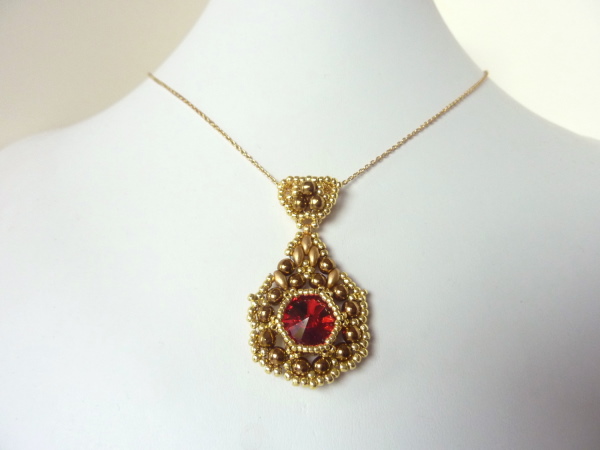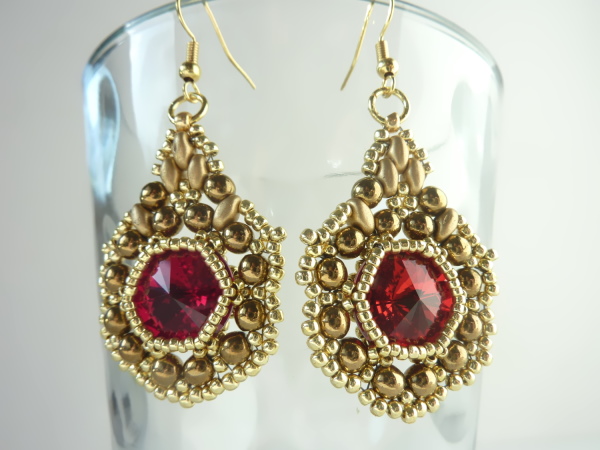
Enjoy a video tutorial for this pattern! This is my latest necklace design, utilizing a modified netting technique.This design works with rondelle crystals of different sizes (as indicated in the diagram and video tutorial), but also works using all the same size 6mm crystals (bicone or round). Although I haven’t tried it yet, I imagine the pattern could be modified to use longer drop beads by omitting a few seed beads above each drop bead. I hope you enjoy this free beading pattern!
Materials
For this design, you will need 11/0 seed beads, three sizes of rondelle crystals (3x4mm, 4x6mm, and 6x8mm), superduos, and two 6/0 or 8/0 seed beads to connect a clasp via jump rings at either end. You can optionally substitute the rondelle crystals for all the same size 6mm crystals, as pictured in the black/blue piece below.
More Photos and Demo Video
Click on the photos below (or the free beading pattern) to zoom in.
Video Tutorial
BeadDiagrams.com has introduced video tutorials! BeadDiagrams.com tutorials have an advantage over other video tutorials, offering a printable PDF to accompany each tutorial, to help and follow along with. Subscribe to my YouTube channel (https://youtube.com/c/BeadDiagramsTutorials) to be notified of new tutorials. I am not only posting tutorials for new designs, but also for previously posted designs!
Click on the image below to view the video tutorial for this design:

Download PDF
If you wish to print the pattern, download it in PDF format:
If you enjoy the free designs, tutorials, and downloads provided by BeadDiagrams.com, consider donating using Paypal!










